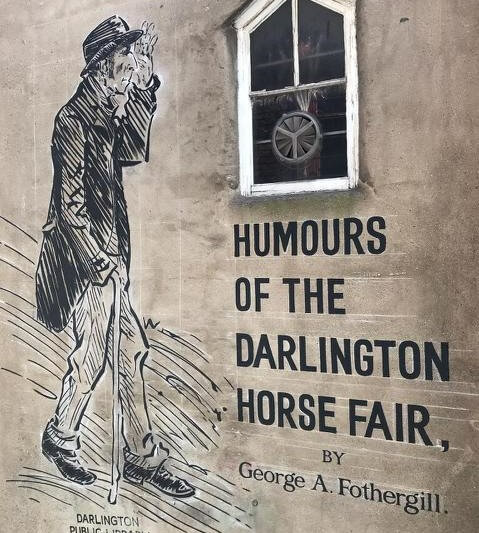
Darlington Heritage Trail
Explore the rich history and heritage of Darlington with our trail. Follow along with each place and see what you discover!
Town Hall
Darlington Town Hall was opened on 27th May 1970 by a young HRH Princess Anne, who was wearing a mini skirt, the fashion of the day!
The ‘Resurgence’ sculpture in the forecourt was designed by artist John Hoskins. Hoskins went on to become Professor on Fine Arts at Leicester University. The sculpture celebrates Darlington’s recovery after the closure of the railway industries.
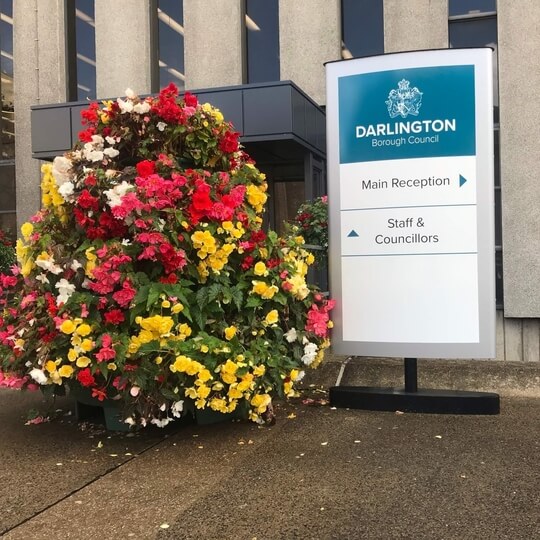
St Cuthbert's Church
St Cuthbert’s church dates back to 1183 and was the first early English-style church in County Durham. It was named after St Cuthbert whose sacred bones passed close to Darlington but the church is known locally as ‘The Lady of the North’.
When the floor was re-laid in the 1800s, about 300 skulls were found in graves inside the church.
Local legend says that Lady Jarratt haunts the area having been murdered here by Civil War soldiers who stole her gold ring.
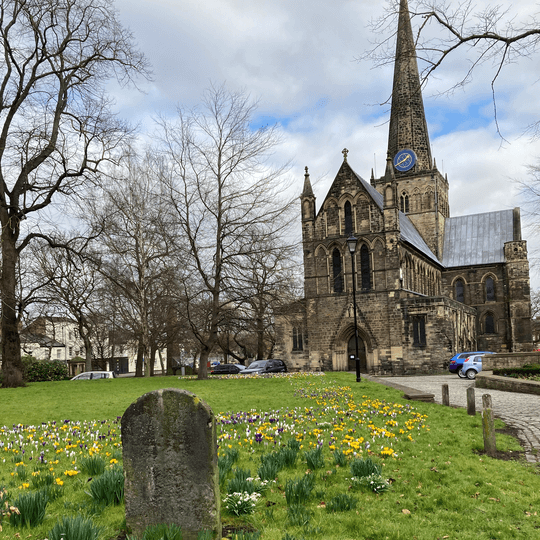
Joseph Pease Place
Joseph Pease was a local businessman and the UK’s first Quaker MP. Joseph and the Pease family pioneered the Stockton and Darlington Railway Company. The statue was unveiled in 1875.
Four panels on the plinth show the key causes Joseph believed in; politics, industry, education and anti-slavery.
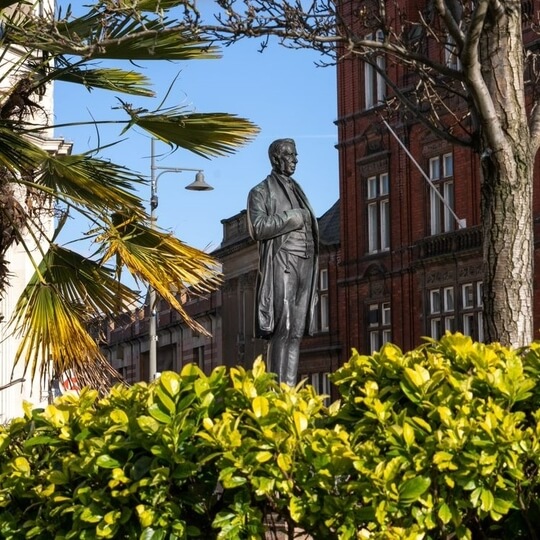
Market Cross
Dame Dorothy Browne presented the Market Cross to Darlington in 1727. Dame Dorothy was the great-granddaughter of Richard Barnes. Richard became the Bishop of Durham in 1577 and he controlled the markets and collected a tariff from traders. Dame Dorothy inherited the sole right to collect a toll from Darlington Market Traders.
The carving around the top of the column says "This cross Erected by Dame Dorothy Brown". You can see where the stonemason originally spelt her surname without an E and without enough room beside the N, has instead had to add the E above.
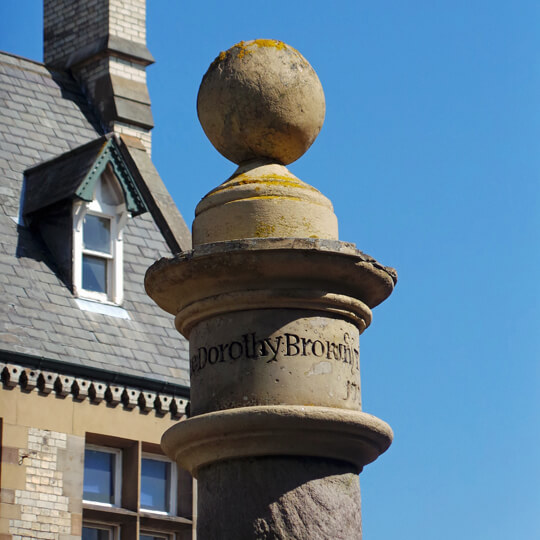
Market Hall
Darlington’s market tradition comes from the early 17th century and is still an important part of the town centre’s identity. Before 1800 there were 12 ‘shambles’ or narrow, cobbled streets south of the Market Cross. The stalls included fish, butter, cattle, sheep, horses, pigs and even cats. Seasonal shows and merchants selling linen, cloth, leather and metal items boosted market trade.
By the 19th Century the market facilities had become inadequate and there were growing public health concerns.
In 1854 Darlington Council purchased the market rights for £7,854.19s.4d and built this Victorian Market Hall for £16,356.8s.9d. It was designed by the relatively unknown Quaker architect, Alfred Waterhouse. Waterhouse went on to fame, designing Manchester Town Hall and the Natural History Museum in London.
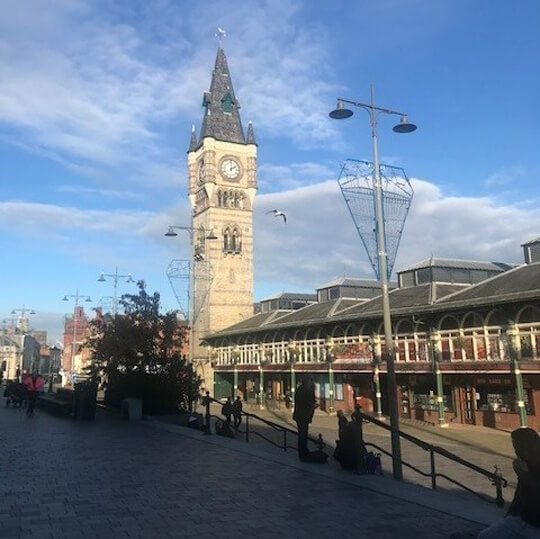
Clock Tower
Stretching high above the town centre is Darlington’s most famous landmark, the Clock Tower. The clock was a gift to Darlington from Joseph Pease.
The clock face was produced by Cooke’s of York and the tower bells were cast by Warner & Sons of nearby Norton-on Tees, who also cast the original 1856 London Big Ben hour bell, which later cracked and had to be replaced. Luckily Darlington’s bells are still going strong.
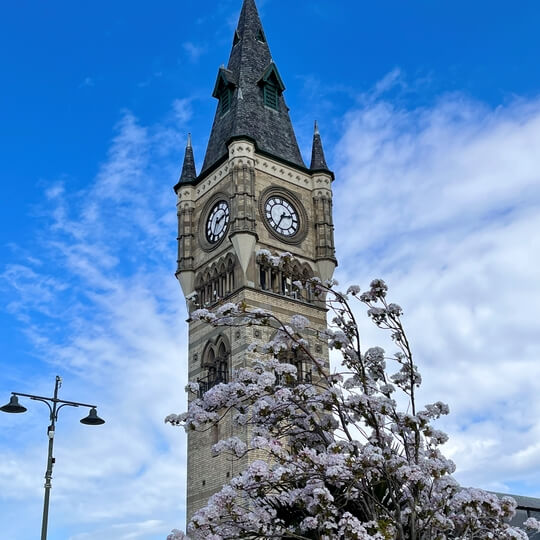
Market Cascade
The Market Cascade was designed by artist Michael Pinsky. In 2009 the Fountain Society awarded it joint first in the ‘Best New Fountain or Water Feature in the UK in the Last Five Years’.
The water and red granite ‘barcode’ design represents the washing away of the blood from the cattle markets which used to be held on High Row and from the slaughterhouse in Skinnergate. The barcode design also symbolises the town’s link to retail trade.
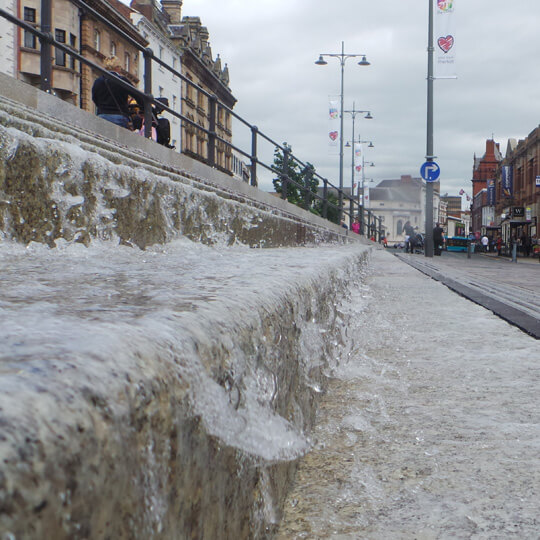
High Row
High Row, Darlington’s most well-known street, was on the Great North Road from London to Edinburgh until 1965 and has seen all sorts of traffic.
In the 1860s, Darlington was only the third town in the country to have a horse drawn street tram, which was replaced by an electric tram in 1904.
In 2007 it became pedestrianised as part of a major scheme to improve the town centre.
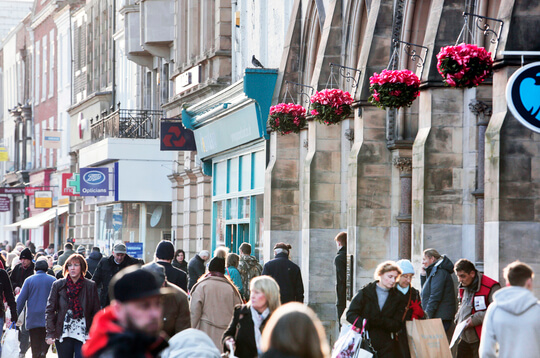
Clark's Yard
Darlington's yards and wynds link High Row to Skinnergate. Much of this area was lost to fires in 1585 and in 1759.
Clark’s Yard is the best preserved of Darlington’s yards and has many original features. These include a rainwater head close to the High Row entrance showing the mark ‘JP 1767’. This was originally the side of John Pease’s 1750s house. Later it was owned by the Herald newspaper, you can still see the hoist at head height, which was used to haul heavy newsprint rolls.

Buckton's Yard
This yard has taken several names over the years, originally named Collings Yard after the grocers owned property then White Swan Yard after a pub at its eastern end. Its present name owes to John Buckton, a director of the Stockton & Darlington Railway.
Buckton's Yard is also home to the George A Fothergill mural. He was a doctor that moved to Darlington and was so inspired that he gave up his practice and became an artist. During the 10 years he spent in the area, Fothergill became well known for his sketches and paintings, but he also produced letterheads, silhouettes, adverts and Christmas cards.
